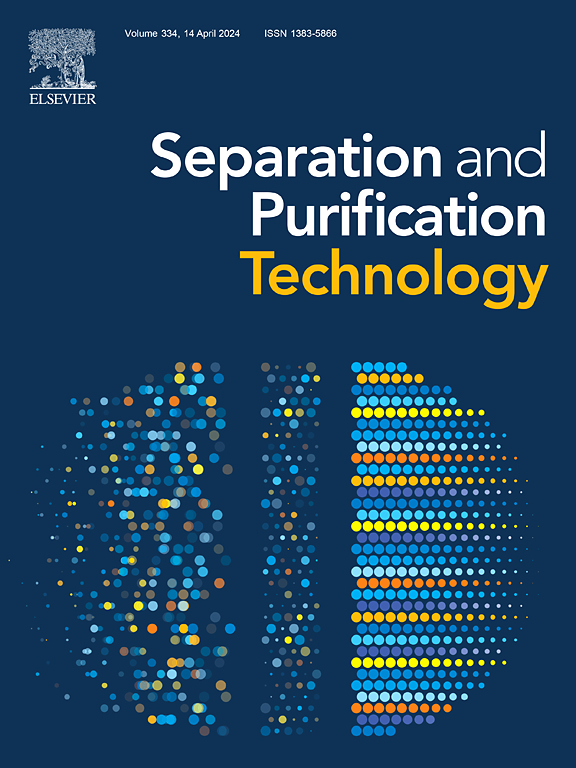Study on the microstructure and mechanical properties of uranium tailings reinforced by MICP under the action of activated carbon
IF 8.1
1区 工程技术
Q1 ENGINEERING, CHEMICAL
引用次数: 0
Abstract
Microbial Induced Calcium Carbonate Precipitation (MICP), recognized as a low-carbon and environmentally sustainable consolidation technique, faces challenges related to inhomogeneous consolidation. To mitigate this issue, this study introduces activated carbon into uranium tailings. The porous structure and adsorption capacity of activated carbon enhance bacterial retention time, increase the solidification rate, and promote the growth and distribution of calcium carbonate, resulting in more uniform consolidation and improved mechanical properties of the tailings. Additionally, a novel independently developed grouting method significantly enhances the mechanical strength of the tailing sand samples. To perform a micro-scale analysis of the samples, distinct activated carbon-tailings DEM models are constructed based on varying activated carbon dosages. Physical experiments and parameter calibration are employed to investigate the micro-mechanical properties, such as velocity field and force chain distribution. Experimental and simulation results demonstrate that incorporating activated carbon increases the calcium carbonate production during the MICP process. As the activated carbon content increases, the peak stress of the tailings initially rises and then declines, reaching its maximum at 1.5 % activated carbon content. At 100 kPa confining pressure, the peak stress is 2976.91 kPa, 1.23–1.59 times that of samples without activated carbon and 6.08–7.86 times that of unconsolidated samples. Micro-scale motion analysis reveals that particle movement is predominantly axial at the ends and radial near the central axis. The initial direction of the primary force chains aligns with the loading direction. Following failure, some primary force chains dissipate, while new chains form, predominantly along the axial direction and secondarily in the horizontal direction. Compared with samples without activated carbon, those containing activated carbon exhibit more uniform force chain distribution, higher stress levels, and greater peak stress. This study offers a novel approach to enhance the stabilization and solidification efficiency of MICP and establishes a DEM model that provides valuable insights into the structural deformation and micro-mechanical characteristics of MICP-cemented materials.
求助全文
约1分钟内获得全文
求助全文
来源期刊

Separation and Purification Technology
工程技术-工程:化工
CiteScore
14.00
自引率
12.80%
发文量
2347
审稿时长
43 days
期刊介绍:
Separation and Purification Technology is a premier journal committed to sharing innovative methods for separation and purification in chemical and environmental engineering, encompassing both homogeneous solutions and heterogeneous mixtures. Our scope includes the separation and/or purification of liquids, vapors, and gases, as well as carbon capture and separation techniques. However, it's important to note that methods solely intended for analytical purposes are not within the scope of the journal. Additionally, disciplines such as soil science, polymer science, and metallurgy fall outside the purview of Separation and Purification Technology. Join us in advancing the field of separation and purification methods for sustainable solutions in chemical and environmental engineering.
 求助内容:
求助内容: 应助结果提醒方式:
应助结果提醒方式:


